22 Best Plank Exercises To Strengthen Your Core And Back
Knowing how to do them right can do you more good than just improving your posture and flexibility.
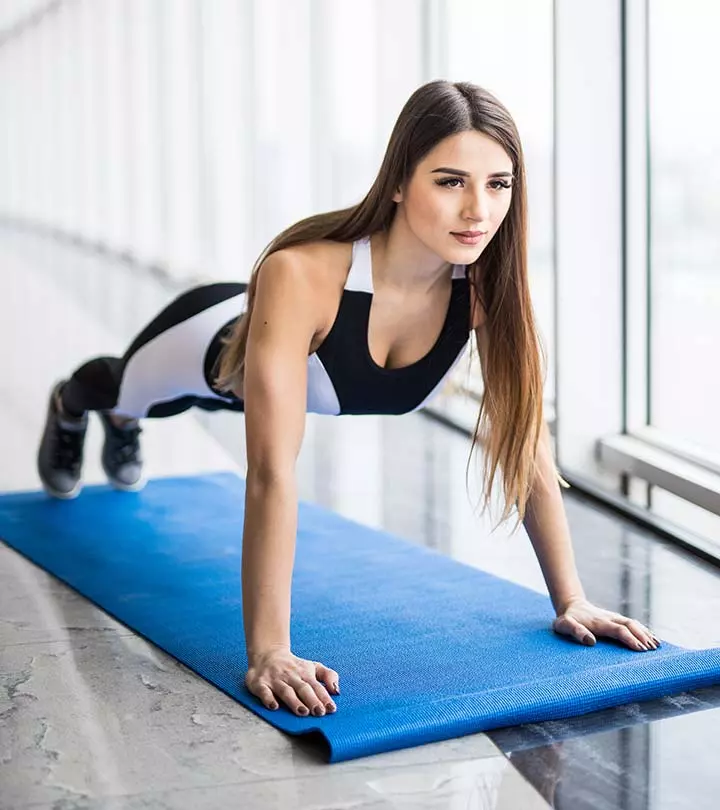
Image: Shutterstock
Plank is the best core strengthening exercise. It engages the ab muscles, glutes, shoulders, biceps, and legs. Doing a plank workout with its variations for 15 minutes a day can help uplift your mood, help with flexibility and posture improvement, and reduce belly fat. Planks are great for stability training because they improve trunk stability, which adds to the way you stand and walk and promotes balance improvement. You will also look and feel more confident. So, get into your workout clothes and plank! Here’s how to do planks correctly. Scroll down!

 Workout Blueprint: Plank Exercises
Workout Blueprint: Plank Exercises- Frequency: Daily
- Benefits: Improve posture, strength, and flexibility.
- Equipment Needed: Mat, exercise ball, dumbbells.
- Space Required: Large area
- Assistance Required: Yes, for certain exercises.
- Who Should Avoid: Anyone who has recently undergone surgery or childbirth and anyone with pelvic pain, herniated disc, or arm injury.
In This Article
Highlights Of The Article
- What Is A Plank?
- Why Should You Plank?
- 22 Plank Exercises
- How To Improve Plank Time Gradually
- Common Plank Mistakes
- Should You Plank?
- 30-Day Plank Challenge
1. What Is A Plank?
Plank is a bodyweight exercise, which means you use your body weight (instead of other weights like dumbbells or barbells) to build strength. It is also known as Kumbhakasana in Sanskrit, and is a part of the Sun Salutation or Surya Namaskar. Holding your body on your toes and forearms while facing down (or on the side) for a few minutes is what you do in plank exercises. It is a static full body workout and requires no equipment. Its effects are immense, about which I will talk in the next section. Check it out.
2. Why Should You Plank?
Doing plank exercises regularly can benefit you in many ways. Being a core-strengthening exercise focused on functional fitness, a plank can help you get a flat tummy, correct your posture, and improve your mood. Here is the list of benefits of doing planks every day.
- Improves Posture – Planking strengthens the core and lower back muscles, thereby improving your posture.
- Reduces Belly Fat – Tummy pooch is an indispensable gift that most of us get in return for our poor lifestyle habits. If you want to lose those extra inches, you need to plank. By building and strengthening the core muscles, you will be able to sculpt your abs in no time.
- Improves Flexibility – Planks are great for improving flexibility as well. You should do different variations of planks to get rid of your belly fat.
- Reduces Back Pain – If you suffer from back pain, planking can be one of the solutions. Since this low-impact exercise targets both the core and back muscles, it strengthens them, thereby reducing back pain.
- Uplifts Mood – Lastly, being able to kill a plank properly can help improve your mood and kick the feel-good hormones in. It’s a great way to build confidence and have a “go-for-it” attitude.
- Builds Stamina – Being able to hold a plank for a few minutes and then gradually increasing the time will help build stamina. And you will be able to perform other exercises better.
Planks also engage the core, leading to better body stability and coordination. All these benefits make them a functional exercise that is beneficial for everything from sports to daily movements.
Dr Mehmet Yildiz, a scientist and blogger, does planks every day. He writes, “I have been leveraging planks for decades to improve my health and fitness (i).” He adds how convenient it is to perform the exercise, “While planking, I sometimes read books, listen to music and audiobooks, and even record my voice for various purposes.”
Now you know why you should plank. Let’s see how to do the standard plank exercises and its other variations to target the different muscles in your body.
3. 22 Plank Exercises
1. Traditional Plank

This is the most basic form of plank and works on your entire body. One thing to keep in mind – your hands should be directly underneath your shoulders, and your body should be in a straight line. Here’s how to do the traditional, basic plank.
Target – Core, glute, shoulders, and biceps.
How To Do
- Assume a cat pose on a mat. Your arms should form a straight line from your shoulders to the elbows.
- Push your body up and support it on your palms and the balls of your feet.
- Keep your back straight and your tush aligned with the entire body; all in a line.
- Do not strain your neck. Keep the abs engaged by sucking the belly button in.
- Hold the plank for at least 30 seconds.
- Release and repeat.
Rest –
20 seconds
Repeat – 2 more times
 Quick Tip
Quick Tip2. Forearm Plank

The Forearm Plank, also known in yoga as the Dolphin Pose, is a variation of plank that is done on your forearms. This works exactly like the first exercise, but it also targets your upper back and shoulder muscles. Here’s how to do it correctly.
Target – Core, glute, shoulders, lats, and biceps.
How To Do
- Assume the plank position. Keep your abs tight, back straight, and your shoulders, back, and body in a line.
- Make sure your hands are underneath your shoulders.
- Clench your right fist, flex your right elbow, and rest your entire forearm on the floor. Do this with the left hand as well. Now, you will be at a lower and a more challenging position.
- Make sure your elbows are underneath your shoulders and your abs tight. Hold this pose for 15-30 seconds.
Rest –
20 seconds
Repeat – 2 more times
Note: If you are a beginner, focus on mastering the form of the forearm plank before moving on to the traditional plank. Aim to hold the plank for 30 seconds to a minute. If this is challenging, start with shorter holds and gradually build up. Once you are able to hold yourself well, move on to the variations mentioned below.
3. Side Elbow Plank

The Side Elbow Plank is a variation of the Forearm Plank. It is also done as a beginner’s version of the side plank, which is also a great oblique exercise. Though this variation puts slightly more pressure on your shoulders, it is easier to balance.
Target – Core, glute, adductori A group of muscles located within the thighs that are responsible for the movement and flexibility of the legs. , external and internal obliques, and biceps.
How To Do
- Lie down on your right side, and hold your upper body up by placing your elbow and forearm on the floor perpendicular to your upper arm, with the palms flat on the floor. Flex both your knees a little and keep your left foot on the right one. Place your right arm on the right side of your waist.
- Slowly and steadily lift your buttocks toward the ceiling and hold this pose for 30 seconds. Make sure you breathe in and breathe out.
- Repeat on the other side.
Rest –
20 seconds
Repeat – 2 more times
 Quick Tip
Quick Tip4. Star Forearm Plank

This is an advanced variation of the Side Elbow Plank. It challenges your flexibility, strength, and balance.
Target – Core, glute, adductor, external and internal obliques, and biceps.
How To Do
- Lie down on your right side, and hold your upper body up by placing your elbow and forearm on the floor perpendicular to your upper arm, with the palms flat on the floor. Keep your legs straight, with the left foot on top of the right.
- Lift your hips and then raise your left leg towards the sky.
- Raise your leg as high as you can and try to hold your big toe with your raised arm.
- If you are not flexible enough to hold your toe in your hand, it is okay; just raise it as much as you can and hold the position.
- Repeat on the other side as well.
Rest –
25 seconds
Repeat – 2 more times
5. Hip Dips
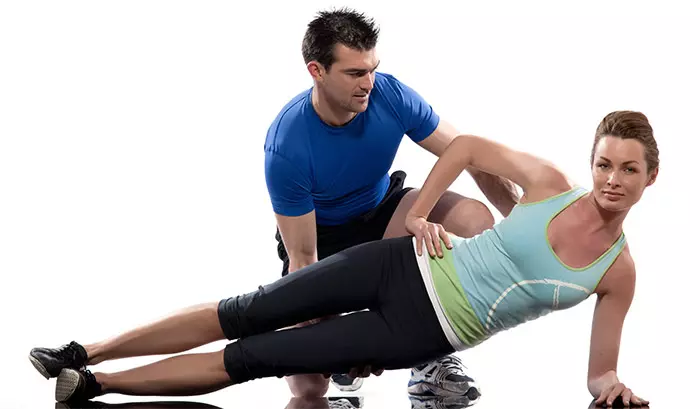
This move is very effective for toning that love handles, getting rid of the muffin tops, and whittling your waist. It targets your obliques, abdominals, and even your lats.
Target – Core, glutes, adductors, external and internal obliques, shoulders, and biceps.
How To Do
- Get into the Side Elbow Plank position and balance yourself.
- Dip your lower hip towards the floor and lift again.
- Do 10 dips on each side.
Rest –
20 seconds
Repeat – 2 more times
6. Hip Twists

Hip twists are one of the best plank exercises for toning your waist and strengthening your core.
Target – Core, glute, adductor, and biceps.
How To Do
- Start in the Forearm Plank position.
- Twist your hips and touch each hip on the floor in turns. The movement will be something like this – twist and touch the right hip, and then twist and touch the left hip.
Rest –
20 seconds
Repeat – 2 more times
7. Side Arm Plank

This is a variation of the traditional plank. It is very effective for correcting the upper back posture and targeting your upper back fat. This move is great for toning the obliques.
Target – Core, glute, adductor, obliques, and biceps.
How To Do
- Place your right palm flat on the mat, with the fingers pointed straight ahead. Flex your left knee and place your left foot in front of your right leg, near your belly, with the left femur and shin at about 30 degrees with each other.
- Lift your hips toward the ceiling, open your left hand, and support your body on a fully extended right hand and the outer part of your right foot. Lift your left foot and place it on top of the right foot.
- Hold for 15-20 seconds and then repeat on the other side.
Rest –
20 seconds
Repeat – 2 more times
8. Star Side Arm Plank

The Star Side Arm Plank is a variation of the Side Arm Plank exercise. It is a very advanced move, which requires a lot of balance. It is also one of the best strengthening exercises in yoga.
Target – Core, glute, adductor, obliques, shoulders, and biceps.
How To Do
- Place your right palm flat on the mat, with the fingers pointed straight ahead. Flex your left knee and place your left foot in front of the right leg, near your belly, with the left femur and shin at about 30 degrees with each other.
- Lift your hips toward the ceiling, open your left hand, and support your body on a fully extended right hand and outer part of your right foot. Now, lift your left foot and place it on top of the right one.
- Lift your left leg so that your body is in a fully open pose now, as if you are going to give someone a big hug!
- Hold this pose for 15 seconds, release, and repeat on the other side.
Rest –
20 seconds
Repeat – 2 more times
9. Rolling Plank
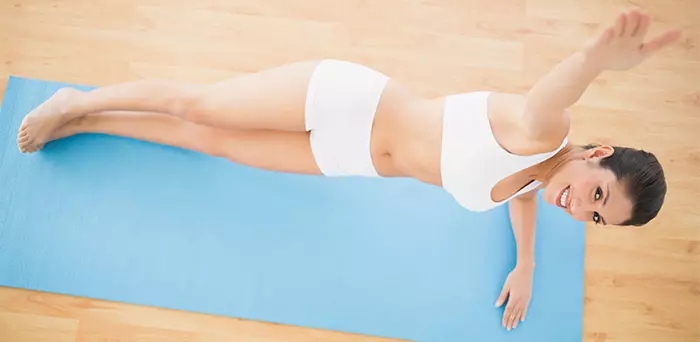
The rolling plank is a strengthening and cardio exercise that is excellent for your hips, waist, core, and arms. This move can be done on the arms as well as forearms.
Target – Core, glute, obliques, shoulders, biceps, and wrist flexorsi Groups of muscles responsible for the flexing and bending of various body parts. and extensorsi A group of muscles that allow you to stretch, extend, and straighten your body parts. .
How To Do
- Start in the forearm plank position and make sure you have the form right.
- Lift your right arm and twist your body on the left into a Side Elbow Plank.
- The difference here is that you do not stack your feet on each other. Just turn and come to the forearm position again, and then turn to the other side.
- Without losing your balance, keep turning from side to side. The movement will be something like this – left to center to right and back to center.
- Do 20 rolls to complete one set.
Rest –
20 seconds
Repeat – 2 more times
10. Plank With Leg Lift

Plank with leg lifts strengthens your entire upper body. By lifting one leg, you intensify the work done by your core stabilizers. This helps build their power.
Target – Core, glute, obliques, shoulders, biceps, and wrist flexors and extensors.
How To Do
- Get into the standard plank position. Keep your arms locked and abs tight.
- Lift one leg as high as you can, or until it is parallel to the ground. Hold for 10 breaths.
- Lower that leg and lift the other leg.
Rest –
20 seconds
Repeat – 2 more times
11. Plank Up-Downs

This is a tough (but fun) plank exercise that helps build strength and stamina. Here are the muscles that it works on.
Target – Core, glute, shoulders, lats, biceps, and wrist flexors and extensors.
How To Do
- Get into the standard plank position.
- Bend your right elbow and set your forearm down. Then, bend the left elbow and set the left forearm down as well. Now, you are in a Forearm Plank.
- Straighten the left arm, and then the right arm. Return to the standard plank position.
- The movement is something like this – Plank to Forearm Plank and then Forearm Plank to Plank.
- Do 10 reps to complete one set.
Rest –
25 seconds
Repeat – 2 more times
12. Plank With Oblique Crunch
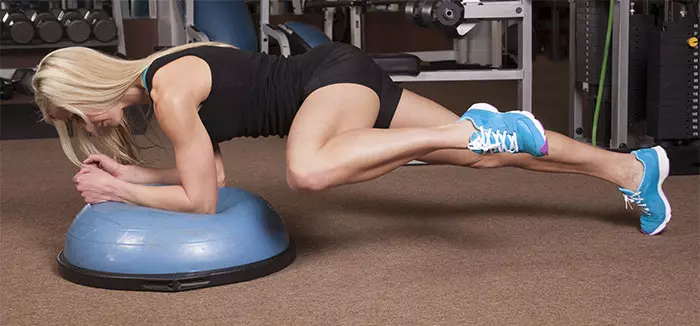
Plank with oblique crunch is an intense move for your obliques and abdominals. You can do it on a mat or use a Bosu ball.
Target – Core, glute, obliques, shoulders, lower back, and biceps.
How To Do
- Get into a standard plank position and tighten your abs.
- Bend your left knee, turn it to the side and touch your elbow with it. Squeeze your left obliques.
- Straighten your leg back and repeat with the other leg.
- Repeat 15 times on each side to complete one set.
Rest –
25 seconds
Repeat – 2 more times
13. Swiss Ball Plank
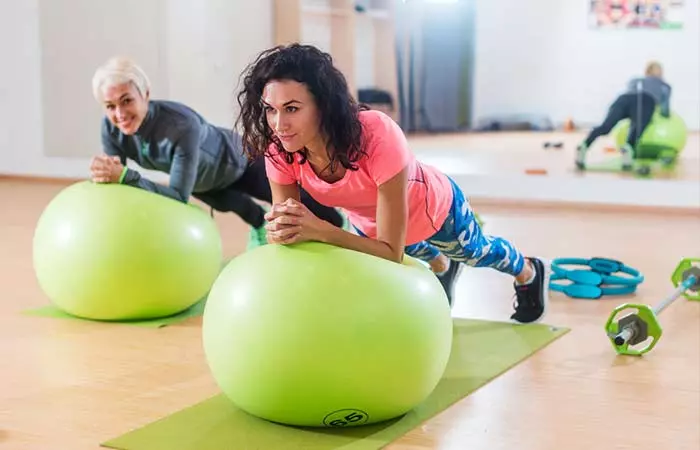
This is a raised plank, which needs a Swiss ball. It intensifies the work on your core stabilizers.
Target – Core, glute, and biceps.
How To Do
- Clench your fists and place them on a Swiss ball at shoulder-width apart.
- Roll back your shoulders. Balancing your body on your forearms, extend your legs back, and support your lower body on your flexed toes.
- Keep your thighs in line with your hips and core engaged. Hold this pose for 15 seconds or until you feel the burn in your core.
Rest –
15 seconds
Repeat – 2 more times
14. Tummy Tucks

Tummy tucks are great for cardio and for targeting your abdominal muscles.
Target – Core, glute, hamstrings, quads, shoulders, and biceps.
How To Do
- Fish your hands and get into the arm plank position, with the legs fully extended behind you and the core engaged.
- Lift your left leg, flex your left knee, tuck it in toward your chest and bring the leg back to the starting position.
- Repeat with the right leg.
- Repeat 20 times to complete one set.
Rest –
15 seconds
Repeat – 2 more times
15. Plank Row
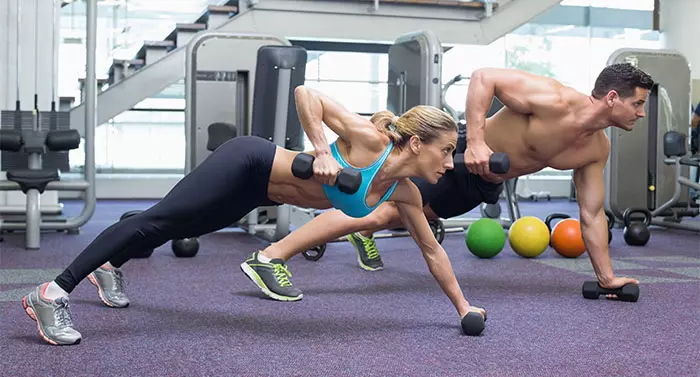
This move requires a set of dumbbells and is similar to bent-over-rowing. This exercise works on the following muscles.
Target – Core, glute, shoulders, and biceps.
How To Do
- Grab a pair of dumbbells and get into the plank position.
- Bend your elbow and row that dumbbell towards your chest and lower it.
- Repeat on the other side. Do 10 reps for each arm.
Rest –
15 seconds
Repeat – 2 more times
16. Plank With Legs On Exercise Ball

In this variation, your legs rest on the exercise ball. This move lessens the pressure on the core and intensifies the workout.
Target – Core, glute, shoulders, and biceps.
How to Do
- Place a gym ball behind you.
- Get into an arm plank position. Place your legs up on the gym ball, with the toes facing down.
- Hold this pose for 10-25 seconds.
Rest –
15 seconds
Repeat – 2 more times
17. Plank Pikes
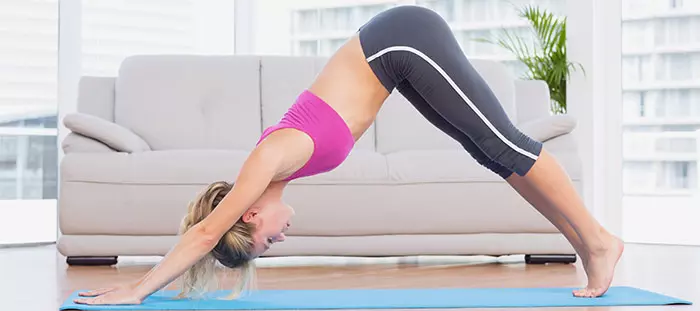
Again, a great cardio move for your lower belly fat and lower back.
Target – Core, glutes, shoulders, lats, hamstrings, calves, quads, triceps, and biceps.
How To Do
- Assume an arm plank position.
- Lift your heels and push your hips toward the ceiling. Push your lower body inward so that you form an inverted ‘V’ pose. Do not strain your neck. Keep it nice and easy.
- Hold this pose for 3 seconds and then revert to the plank position.
- Repeat 10 times to complete one set.
Rest –
15 seconds
Repeat – 2 more times
18. Reverse Plank

The Reverse Plank is quite challenging, but you can follow the steps to do it correctly. Here are the muscles this exercise targets.
Target – Core, glutes, shoulders, lats, hamstrings, quads, triceps, and biceps.
How To Do
- Sit on the floor with your legs in front of you and place your hands behind you, hip-width apart.
- Using your arms to support your weight, lift your butt off the floor until your body is in a straight line from the shoulders to the feet. This is the Reverse Plank.
- Hold this pose for 10-20 seconds before lowering your body back to the floor.
Rest –
10 seconds
Repeat – 3 more times
19. Reverse Plank With Leg Lift

Shutterstock
The Reverse Plank with Leg Lift intensifies the work your core does to stabilize you into the Reverse Plank position.
Target – Core, glutes, shoulders, lats, hamstrings, quads, triceps, and biceps.
How To Do
- Sit on the floor and lift yourself in the reverse plank position, but keep your knees flexed so that your femur and shin are at right angles with each other.
- Slowly lift one leg up and hold. Make sure your raised leg is straight.
- Hold this pose for 10-15 seconds.
Rest –
10 seconds
Repeat – 2 more times
20. Plank With Donkey Kicks

This is another challenging but effective variation of the plank exercise. Here are the muscles it targets.
Target – Core, glutes, shoulders, lats, hamstrings, quads, triceps, and biceps.
How To Do
- Get down on your hands and knees with your hands in line with your shoulders. If you are a beginner, stay on your knees. But if you are at an intermediate or advanced level, raise yourself into a plank.
- Lift one leg and curl it towards the sky by bending your knees. This is your position.
- Pulse that leg up and back, up and back. Try small, little pulses but squeeze the butt well with each pulse.
- Do 12-15 pulses and then start kicking your leg out.
- Do this with the other leg too.
Rest –
10 seconds
Repeat – 2 more times
21. Halfway Plank

Halfway Plank is an isometrici Exercises related to the tightening or contraction of a particular muscle group to strengthen the muscles. move in which you hold a move in its halfway position. Here are the muscles that it targets.
Target – Core, glutes, shoulders, lats, triceps, and biceps.
How To Do
- Get into the plank position.
- Bend your elbows and lower yourself into a triceps push-up position.
- Hold it for 10 seconds and then push yourself up in the plank.
Rest –
15 seconds
Repeat – 2 more times
22. Plank Jacks

Plank jacks are an effective exercise for improving core stability and overall body strength. They also add an element of cardio to your workout. They target the following muscles:
Target – Shoulders, biceps, core, and glutes.
How To Do
- Get in a high plank position with your arms extended under your shoulders. Ensure to keep your body in a straight line.
- Engage your core and jump your feet out wide to the sides while maintaining the plank position and keeping the arms steady.
- Ensure that your hips don’t sink or arch up.
- Then, jump your feet back together.
- Do 8 to 10 reps for each set.
Rest
– 15 seconds between each set
Repeat – 3 more times
These are the 22 plank positions that will help rebuild your core and back strength. If you want to challenge yourself, you can increase the plank-hold time gradually. Here’s how you can do that.
4. How To Improve Plank Time Gradually
Improving plank time is a challenge, and you shouldn’t shy away from it. Check out the proper way to increase your plank time.
- Warm up before starting your exercise routine.
- Do a mix of cardio and strength training to increase your stamina and muscle endurance.
- Use the timer feature on your phone to time yourself.
- Talk yourself through every extra second that you do.
- Do not rush.
- Practice every day.
Now, for every plank pose, you must follow certain rules to reduce the chances of being injured. Here is what you should be consistent with.
5. Common Plank Rules To Follow
- Keep your shoulder blades pulled down.
- Your legs, buttocks, and hips should be in the same line.
- Keep your core and glutes engaged.
- Do not strain your neck. Keep it in a neutral position, look down at the floor or up at the ceiling.
- Refrain from curving your lower back as much as possible.
Though the plank is a great exercise, it may not be the best exercise for a few of you. Find out if you should plank or avoid it altogether.
6. Who Should Avoid Plank Exercise?
- If you just had surgery.
- If you have pelvic pain.
- If you had recently undergone childbirth.
- If you have herniated disci A medical condition where a part of the spinal disk slides and pushes through the exterior, causing pain and numbness. .
- If you have weak bones.
You must consult your trainer and doctor before doing planks. If they permit you, check out the 30-day plank challenge you can follow below.
7. 30-Day Plank Challenge
You can do this challenge using any plank variation you like. The goal is to hold the position for an increasing amount of time each day. The challenge also has rest days for recovery.
| Day | Time |
|---|---|
| 1 | 45 sec |
| 2 | 45 sec |
| 3 | 50 sec |
| 4 | 50 sec |
| 5 | 55 sec |
| 6 | 60 sec |
| 7 | Rest |
| 8 | 60 sec |
| 9 | 60 sec |
| 10 | 1 min 5 sec |
| 11 | 1 min 5 sec |
| 12 | 1 min 10 sec |
| 13 | 1 min 15 sec |
| 14 | Rest |
| 15 | 1 min 15 sec |
| 16 | 1 min 15 sec |
| 17 | 1 min 20 sec |
| 18 | 1 min 20 sec |
| 19 | 1 min 25 sec |
| 20 | 1 min 30 sec |
| 21 | Rest |
| 22 | 1 min 30 sec |
| 23 | 1 min 35 sec |
| 24 | 1 min 40 sec |
| 25 | 1 min 40 sec |
| 26 | 1 min 45 sec |
| 27 | 1 min 50 sec |
| 28 | Rest |
| 29 | 1 min 55 sec |
| 30 | 2 min |
Key Takeaways
- Planks may help strengthen the core and engage your ab muscles, biceps, glutes, shoulders, and legs.
- Planking every day may help improve your mood, boost your posture and flexibility, and reduce back pain and belly fat.
- It’s a static exercise that requires no equipment and can be performed by balancing on your forearms and toes while facing downwards or on the side.
- You can also try its different variations to make the exercise more challenging, like the side plank, the reverse plank, or the plank with leg lift.
- You must remember to engage your core muscles and avoid curving your lower back when planking.
Infographic: Quick Warm-Up Routine To Get Ready For Planks
Warming up before strength training or cardio exercises can help prevent injury, give a mental boost, and prepare your body for the upcoming workout. Check out the infographic below for a short and fun warm-up routine to get ready for planks.
Some thing wrong with infographic shortcode. please verify shortcode syntax
The plank workout offers a wide range of benefits, from helping you lose belly fat and improving flexibility to building stamina and strengthening the back. The many variations of this static exercise engage the core, shoulders, glutes, biceps, lats, adductors, internal and external obliques, wrist extensors and flexors, lower back, calves, quads, and triceps. It is indeed a beneficial upper body workout and lower body workout. Planks are effective isometric exercises, offering a proper abdominal workout by engaging the muscles there and strengthening them, improving overall core stability and strength. So, include planks in your fitness routine and practice them daily to gradually increase your plank time. This way, you will be able to see results in about two weeks. However, this bodyweight exercise is not for everyone — those with pelvic pain and a herniated disc must avoid doing it.
Frequently Asked Questions
Do planks burn calories?
Yes! Planks burn calories. Depending on your weight, height, time duration, and intensity, you may burn anywhere between 20-100 calories.
How long should a woman be able to do a plank?
As long as any man can. Get rid of the mental blocks and give your best to each rep that you do.
How long do you have to plank to get abs?
As far as I know, you have ab muscles; maybe they aren’t defined yet, but you sure got them. Sculpting your abs requires discipline and hard work. You must eat right and do a mix of cardio and strength training, planks, crunches, etc.
How many calories will a 1-minute plank burn?
If performed properly, a one-minute plank may potentially burn up to four to five calories.
How long should you plank to lose belly fat?
Anecdotal evidence suggests holding a plank for roughly 60 seconds for at least 3 repetitions may help reduce belly fat.
Why do my elbows hurt when I do planks?
Planking on a hard surface like concrete or wood can increase the risk of ulnar nerve compression injury. It is recommended that planking should be done on soft mats to reduce strain and risk of injury to your elbows.
Is it normal to shake while planking?
Yes, it is normal to shake during a plank because your muscles generate a significant amount of force to keep the position in place. This signifies that you are just testing the limits of your muscle contraction and its endurance capacity.
Illustration: Best Plank Exercises To Strengthen Your Core And Back

Image: Stable Diffusion/StyleCraze Design Team
Embark on an exhilarating 30-day journey with this at-home plank challenge video below. Check it out now, and get ready to unleash your inner strength, shed body fat, and sculpt a leaner physique in no time!
Personal Experience: Source
StyleCraze's articles are interwoven with authentic personal narratives that provide depth and resonance to our content. Below are the sources of the personal accounts referenced in this article.
i. Here’s Why I Plank Every Day for Decades.https://medium.com/sensible-biohacking-transhumanism/why-i-plank-everyday-for-decades-2fefba2cdaae
Read full bio of Dr. Sudhansu Singh
Read full bio of Ravi Teja Tadimalla
Read full bio of Payal Karnik









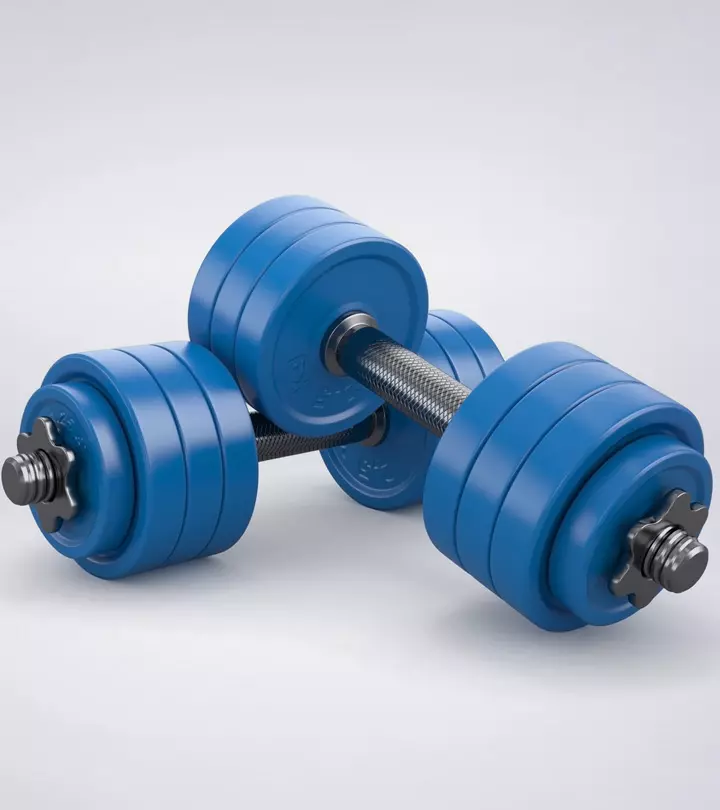







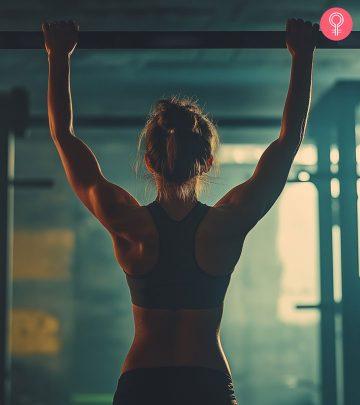




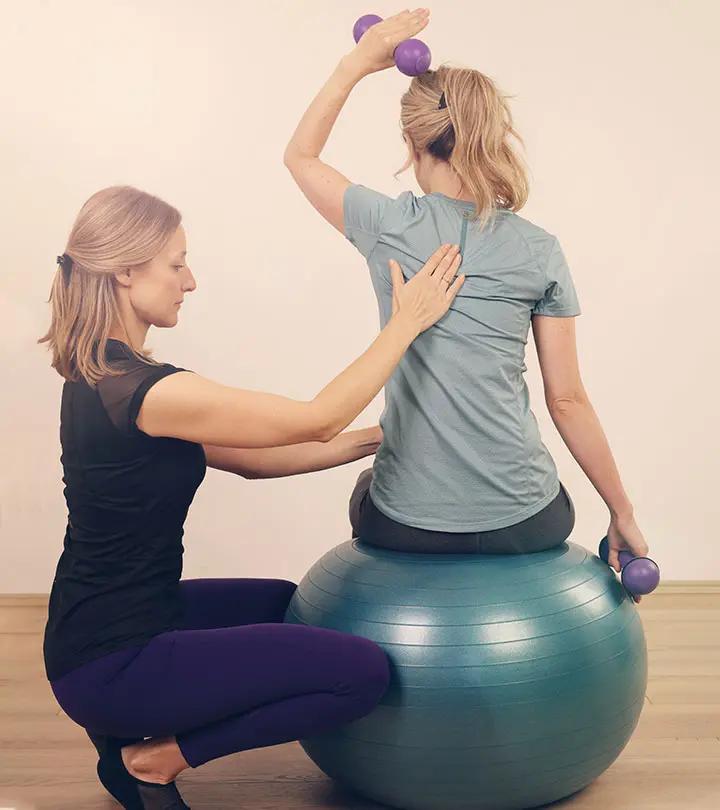




Community Experiences
Join the conversation and become a part of our empowering community! Share your stories, experiences, and insights to connect with other beauty, lifestyle, and health enthusiasts.